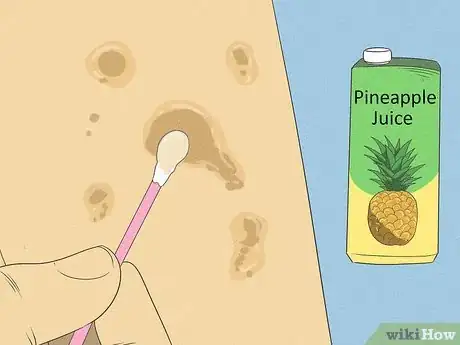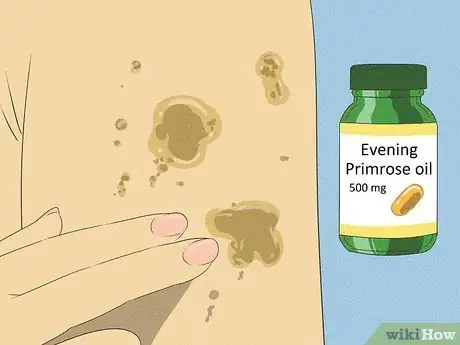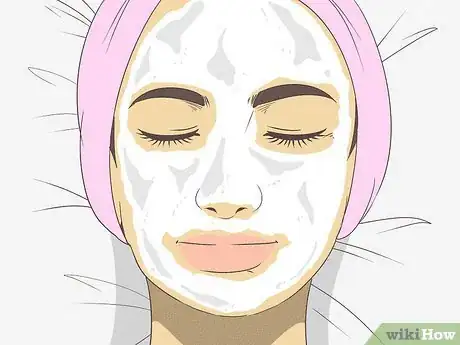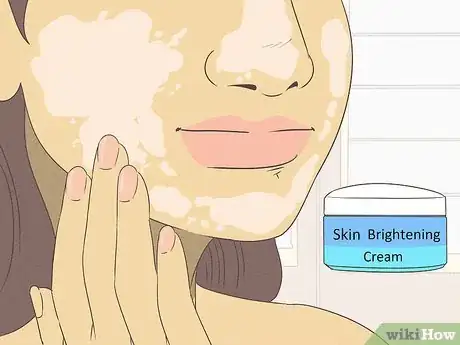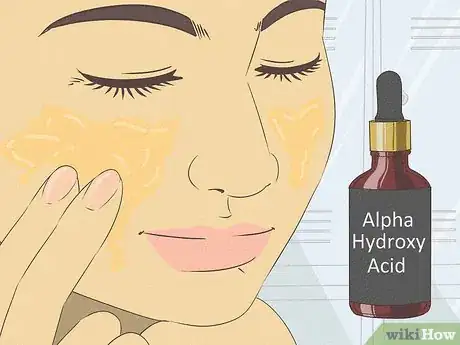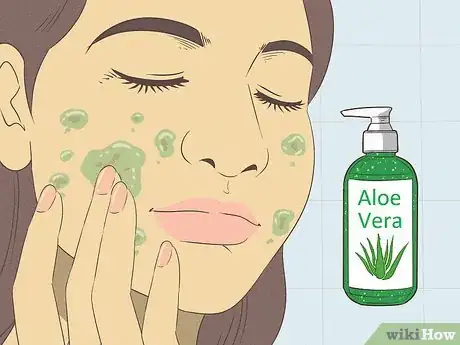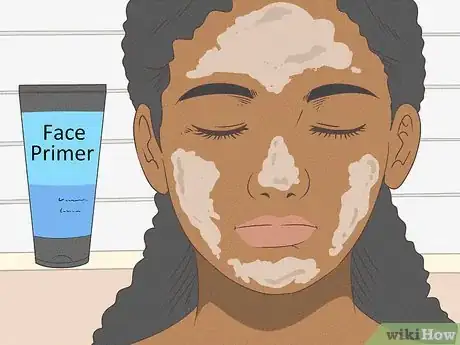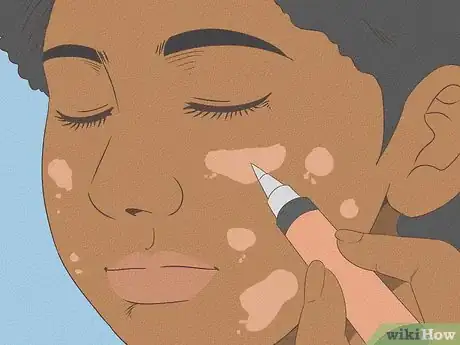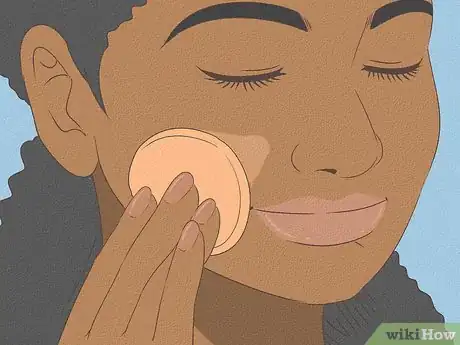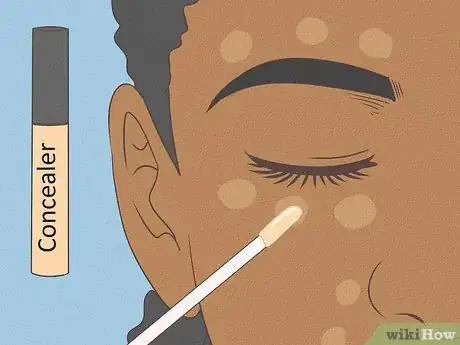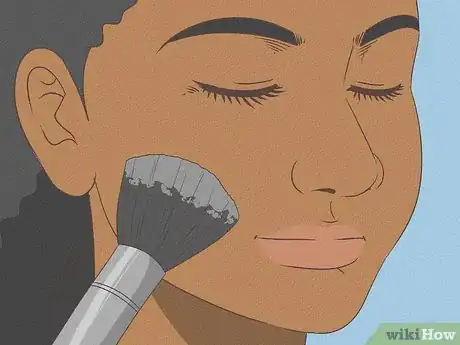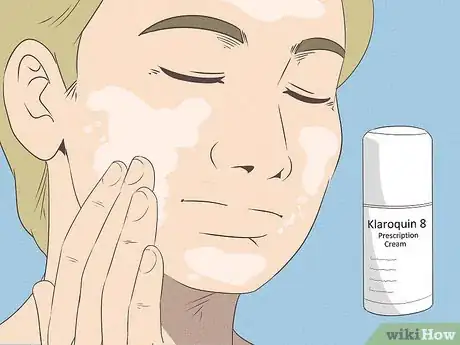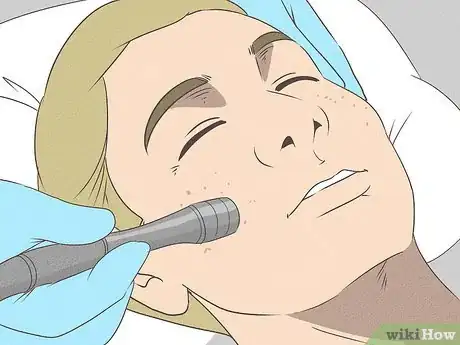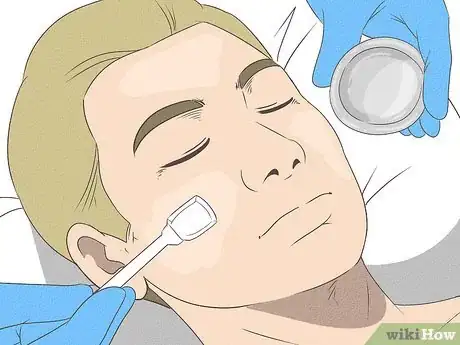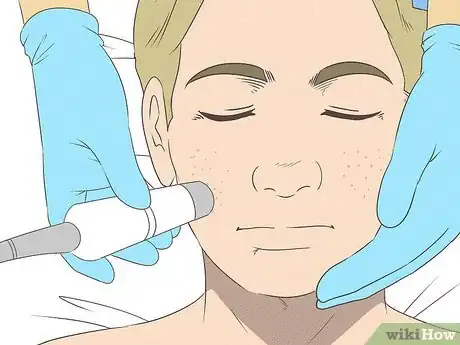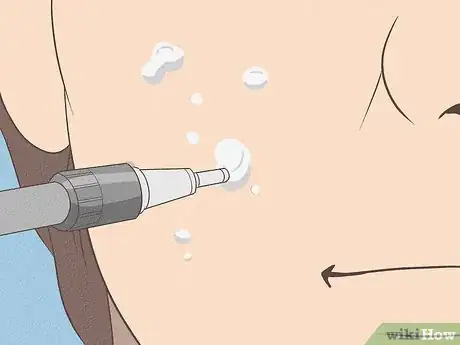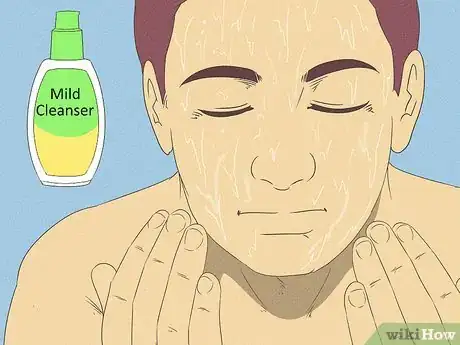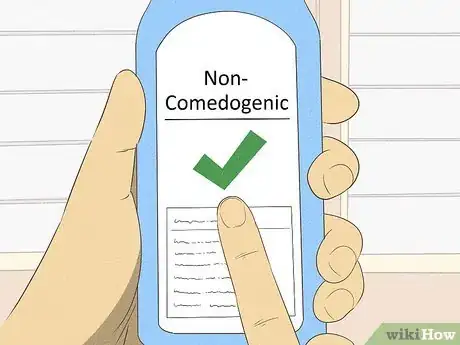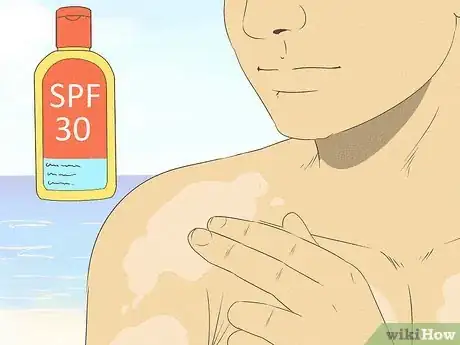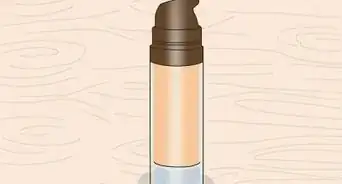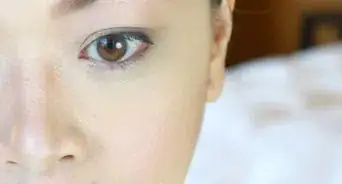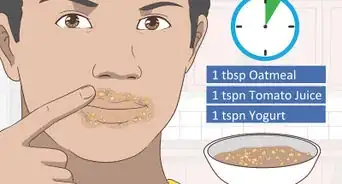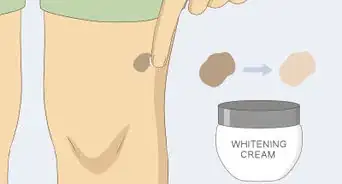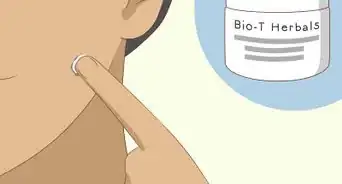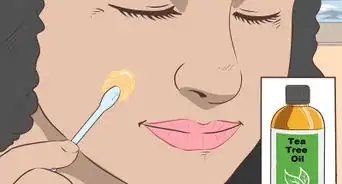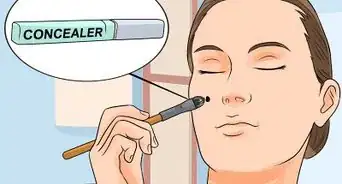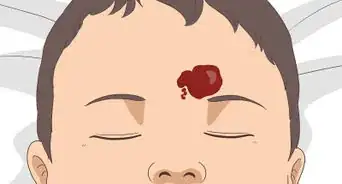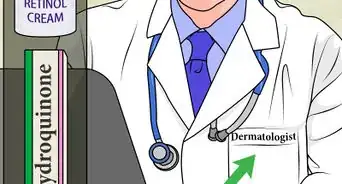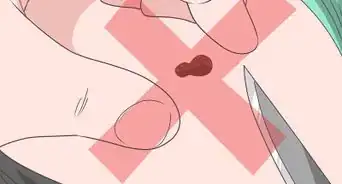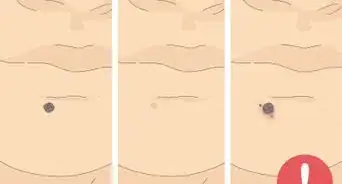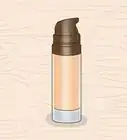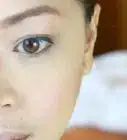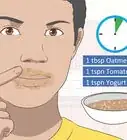This article was co-authored by Kate Holcomb, MD and by wikiHow staff writer, Danielle Blinka, MA, MPA. Dr. Kate Zibilich Holcomb is a Board Certified Dermatologist and the Founder of Pure Dermatology. She has over 15 years of experience in the field and specializes in cosmetic dermatology. Dr. Holcomb earned an MS in Public Health and Parasitology from The Tulane University School of Public Health and Tropical Medicine and an MD from Tulane University School of Medicine. She also completed her residency in dermatology as Chief Resident at Saint Luke’s-Roosevelt Hospital Mount Sinai. Dr. Holcomb is a member of the American Academy of Dermatology, American Society of Dermatologic Surgeons, American Acne and Rosacea Society, Skin of Color Society, North American Contact Dermatitis Society, Louisiana Dermatological Society, and Women’s Dermatologic Society.
There are 16 references cited in this article, which can be found at the bottom of the page.
This article has been viewed 423,933 times.
Looking in the mirror and seeing unwanted spots can be frustrating, and you likely want them to go away. If you have age spots, acne scars, pimples, and freckles that bother you, you have several options for treating them. According to the Mayo Clinic, your dermatologist will be able to offer a plethora of treatment options if you’d like to go that route.[1] However, it may take a while to see results if you opt for DIY solutions, depending on what type of spot you have.
Steps
Using Home Treatments
-
1Apply pineapple juice to dark spots daily to help lighten them. The acid and enzymes in pineapple juice may naturally lighten your brown spots and possibly freckles. Soak a cotton swab in pineapple juice, then dab the juice directly onto your dark spots. Allow it to dry, then rinse your skin clean.[2]
- The juice may cause some skin irritation or sensitivity. If this happens, stop using it and consult your dermatologist.
-
2Dab evening primrose oil onto brown spots to fade them over time. Put a dot of evening primrose oil onto your fingertip, then apply it to your brown spots. Use the treatment twice a day to help lighten your spots over time.[3]
- Use the oil before you apply other skin care products, like serums or lotions. Once the oil dries, you can continue with your typical skin care routine.
Advertisement -
3Do biweekly yogurt face masks to fade dark spots or freckles. The lactic acid in dairy products can fade brown spots on your skin, including age spots and freckles. Smooth a homemade mask onto your skin and let it sit for 20 minutes. Then, wash your face with cool water and pat it dry with a clean towel. Here are some ways to mix up a homemade mask:[4]
- Mix equal parts yogurt and honey.
- Combine 1 tablespoon (15 mL) of yogurt, 1 tbsp (5 grams) of oatmeal, and 2-3 drops of honey.[5]
-
4Use a cream or serum that’s labeled for skin brightening. Apply your brightening cream or serum every morning and evening after you wash your face. Follow the directions on the label to make sure you’re using it correctly. Check the label to make sure it contains 1 or more of the following lightening ingredients:[6]
- Hydroquinone
- Vitamin C
- Azelaic acid
- Tretinoin
- Kojic acid
Warning: Don’t use bleaching creams on your skin, as they can damage it. It’s best to ask your dermatologist which creams are safe to use.[7]
-
5Fade dark spots or scars with a retinol or alpha hydroxy acid. Look for an over-the-counter skin cream that contains a retinol or alpha hydroxy acid.[8] These ingredients speed up your cell turnover, so they can help fade brown spots, acne scars, and possibly freckles.[9] Apply your cream every morning and evening after washing your face.[10]
- If your cream causes irritation or redness, stop using it and see your dermatologist.
-
6Apply aloe vera to brown spots to slowly fade them. Take aloe vera gel from a cut leaf or buy a tube of aloe vera gel from the store. Use a cotton swab to dab the aloe vera directly onto your dark spot. Let the aloe vera dry, then rinse it off with cool water. Repeat twice a day until your dark spot fades.[11]
- You can get aloe vera gel directly from the plant by breaking off a leaf, which will contain the gel. If you prefer to buy it at the store, choose a product that is 100% aloe vera gel.
Did You Know? Aloe vera contains a substance called aloin, which can fade dark pigments in your skin. That’s why aloe vera can help get rid of spots!
Covering Your Spots with Makeup
-
1Start with a primer to make your makeup last longer. Apply a dot of primer to your nose, then spread it outward. Blend the primer out toward your hairline and jawline. Create a thin, even layer to help keep your makeup in place all day. Wait 2-3 minutes for your primer to dry before proceeding.[12]
- You don’t need to use a primer, but it will help ensure all-day coverage.
- Add more primer if necessary to provide an even coverage.
-
2Use a peach concealer to color correct brown spots. Choose a pale peach color for a light skin tone, a medium peach for a medium skin tone, or an orange color for dark skin. Dab the concealer onto the dark spots to neutralize the color. This can help hide brown spots.[13]
- The peach color will counteract the darkness of the spot.
-
3Apply your foundation to even out your skin tone. Choose a foundation that matches your skin tone. Use a makeup sponge or a beauty blender to apply an even layer of foundation. Dab the foundation onto your color correction, then blend it across your face. If you didn’t use color correction, start on your nose and blend outward to your hairline and jawline.[14]
- If you’re using color correction, do it before you apply your foundation.
- If you’re applying regular concealer, put your foundation on first.
-
4Dab a full-coverage concealer on skin spots or blemishes. Pick a concealer that’s the same color as your skin tone or 1 shade lighter. Then, use your finger or a concealer brush to dab the concealer over the spot you want to hide. Blend out the edges to create a smooth finish. Wait 2-3 minutes for it to dry before applying powder.[15]
-
5Finish with translucent powder to set your makeup. Use a powder brush to sweep a thin layer of powder over your face. Dip your brush in the powder, then tap the brush to shake off the excess. Sweep your brush across your face to apply the powder. This will set your makeup so it lasts longer.[16]
- If you want more coverage, use a powder color that’s the same shade as your foundation. However, this may make your face look cakey.
Visiting a Dermatologist
-
1See your dermatologist to learn about the best treatment options. Your dermatologist will examine your skin spots to find out what’s causing them.[17] Then, they’ll tell you the best way to treat them. This can help you choose a safe, effective treatment. Visit your dermatologist to get your skin checked.[18]
- Ask your doctor for a referral to see a dermatologist.
-
2Ask your dermatologist about prescription skin lightening creams. Typically, these products contain hydroquinone, which prevents your skin from making melanin. Use your cream for several months before you expect to see results. Make sure you follow your doctor’s instructions exactly for applying the cream.[19]
- You’ll likely notice your dark spots fading slowly over time.
-
3Try microdermabrasion to help remove age spots or acne scars. During this procedure, your dermatologist will deeply exfoliate your skin to remove the damaged layer of skin. This can reveal younger, more even skin, which helps get rid of dark spots or acne scars. If your dermatologist recommends microdermabrasion, expect to get treatments every 2 weeks over a 16-week period.[20]
- This procedure may cause skin redness or flaky skin.
- If your spots are really dark, they may not completely go away. However, they will likely get lighter.
-
4Get a deep chemical peel to get rid of dark spots, freckles, or acne scars. Your dermatologist can apply trichloroacetic acid or phenol to your skin to peel away the top layer of your skin. This will remove damaged skin cells and reveal smoother, fresher skin. Talk to your dermatologist to find out if a chemical peel might help fade your spots.[21]
- Expect it to take 14-21 days for your skin to heal after a deep chemical peel. During this time, you’ll need to apply an ointment to your skin to help it heal without scarring.
- Your skin will be very sensitive after a chemical peel, so you’ll need to avoid makeup and the sun. Additionally, you might experience redness, burning, and itching.
-
5Ask about laser treatment for brown spots, freckles, and acne scars. A laser treatment uses heat to regenerate your skin, which can fade your brown spots or acne scars in 1 or 2 treatments.[22] Similarly, laser treatments can fade your freckles over the course of several treatments. Talk to your doctor to find out if laser treatments might get rid of your spots.[23]
- Laser treatments do carry some side effects. They may cause your spots to temporarily crust or darken, but this effect will go away.
- Laser treatments typically don’t work well on dark skin or tanned skin.[24]
-
6Try cryotherapy to quickly freeze and fade dark spots. Your dermatologist can use liquid nitrogen to freeze the skin cells that are causing your dark spots. As your damaged skin cells heal, they’ll lighten, which fades your spots. This procedure can be a bit painful, but it provides quick results. Ask your dermatologist if it may be right for you.[25]
- You might have temporary pain, swelling, redness, and blistering after getting this procedure. However, these side effects should heal.
Caring for Your Skin
-
1Wash your face twice a day with a mild cleanser to keep it clean. Apply a dime-size amount of a mild facial cleanser to your skin daily. Use your fingertips to massage the cleanser into your skin, then rinse with cool water. Pat your skin dry with a towel.[26]
- Dirt, sweat, and excess oil can clog your pores and cause acne, which can cause dark spots or scarring.
-
2Treat your acne with benzoyl peroxide, salicylic acid, and retinol. Treating your acne can help it heal faster and may help prevent dark spots and scars. Benzoyl peroxide kills the bacteria that causes acne, while salicylic acid prevents future breakouts. Retinol will help keep your pores clear and may fade dark spots.[27] Check the labels on skin care products to find these ingredients.[28]
- You can find these ingredients in face washes, body washes, and acne creams. You may need to purchase more than 1 product to get all 3 ingredients. Read the labels on the products you choose to make sure it’s safe to use them together.
-
3Avoid picking your pimples, which can cause dark spots or scars. While it’s tempting to pop your pimples, keep your fingers off of your face. Picking or popping your pimples increases the likelihood that you’ll end up with dark spots or scars. Instead, use your acne treatments and wait for them to work.[29]
- If your pimples are really bothering you, see a dermatologist to find out about additional treatments.
-
4Choose personal care products that are labeled as non-comedogenic. Some skin and hair products can clog your pores and cause bumps, including acne. Read the labels on the products you choose to make sure they’re non-comedogenic, which means they won’t clog your pores. This can help you avoid acne and dark pores in the future.[30]
- Check both the front and back label.
-
5Wear a SPF 30 sunscreen every time you go outside. Sun damage can cause age spots and freckles, so it’s important to protect your skin.[31] Apply a broad spectrum SPF 30 sunscreen to your skin daily before you go out. If you’re spending time outdoors, reapply your sunscreen every 2 hours or as directed on the label.[32]
- If you can, don’t go out between 10:00 a.m. and 2:00 p.m. when the sun is at its height.
Tip: Covering your skin with clothing and wearing a wide-brim hat can also protect your skin from the sun.
How Do I Get Rid Of Sunspots On My Skin?
Expert Q&A
-
QuestionHow do you get rid of hyperpigmentation spots?
 Kate Holcomb, MDDr. Kate Zibilich Holcomb is a Board Certified Dermatologist and the Founder of Pure Dermatology. She has over 15 years of experience in the field and specializes in cosmetic dermatology. Dr. Holcomb earned an MS in Public Health and Parasitology from The Tulane University School of Public Health and Tropical Medicine and an MD from Tulane University School of Medicine. She also completed her residency in dermatology as Chief Resident at Saint Luke’s-Roosevelt Hospital Mount Sinai. Dr. Holcomb is a member of the American Academy of Dermatology, American Society of Dermatologic Surgeons, American Acne and Rosacea Society, Skin of Color Society, North American Contact Dermatitis Society, Louisiana Dermatological Society, and Women’s Dermatologic Society.
Kate Holcomb, MDDr. Kate Zibilich Holcomb is a Board Certified Dermatologist and the Founder of Pure Dermatology. She has over 15 years of experience in the field and specializes in cosmetic dermatology. Dr. Holcomb earned an MS in Public Health and Parasitology from The Tulane University School of Public Health and Tropical Medicine and an MD from Tulane University School of Medicine. She also completed her residency in dermatology as Chief Resident at Saint Luke’s-Roosevelt Hospital Mount Sinai. Dr. Holcomb is a member of the American Academy of Dermatology, American Society of Dermatologic Surgeons, American Acne and Rosacea Society, Skin of Color Society, North American Contact Dermatitis Society, Louisiana Dermatological Society, and Women’s Dermatologic Society.
Board Certified Dermatologist Using daily sunscreen is the first step to treating hyperpigmentation—if you don’t have SPF in place, then there is no point in trying other treatments. The next step is identifying the cause of the hyperpigmentation and treating it. If you don’t control the root cause, then you are just chasing your tail. A board-certified dermatologist should be able to help you choose the best treatment to combat from all angles, the disease and resulting hyper- or hypopigmentation.
Using daily sunscreen is the first step to treating hyperpigmentation—if you don’t have SPF in place, then there is no point in trying other treatments. The next step is identifying the cause of the hyperpigmentation and treating it. If you don’t control the root cause, then you are just chasing your tail. A board-certified dermatologist should be able to help you choose the best treatment to combat from all angles, the disease and resulting hyper- or hypopigmentation.
Warnings
- Don’t use lemon juice to lighten your skin. It’s not proven to work effectively, and it may even make your skin more uneven.[33]⧼thumbs_response⧽
- While some people claim apple cider vinegar gets rid of spots, there’s no proof that this is true. Additionally, it may cause skin irritation, so it’s best not to try it.[34]⧼thumbs_response⧽
References
- ↑ https://www.mayoclinic.org/diseases-conditions/age-spots/diagnosis-treatment/drc-20355864
- ↑ https://www.ncbi.nlm.nih.gov/pmc/articles/PMC3569896/
- ↑ https://www.ncbi.nlm.nih.gov/pmc/articles/PMC3569896/
- ↑ https://www.ncbi.nlm.nih.gov/pubmed/18505528
- ↑ https://www.liveabout.com/yogurt-face-mask-recipes-346534
- ↑ https://www.asds.net/skin-experts/skin-conditions/hyperpigmentation
- ↑ https://www.aad.org/public/skin-hair-nails/anti-aging-skin-care/age-spots
- ↑ Mohiba Tareen, MD. FAAD Board Certified Dermatologist. Expert Interview. 26 March 2020.
- ↑ Kate Holcomb, MD. Board Certified Dermatologist. Expert Interview. 29 July 2022.
- ↑ https://www.medicalnewstoday.com/articles/324833.php
- ↑ https://www.ncbi.nlm.nih.gov/pubmed/22495441
- ↑ https://www.health.com/beauty/how-to-use-concealer
- ↑ https://www.health.com/beauty/how-to-use-concealer
- ↑ https://www.allure.com/story/cover-every-pimple
- ↑ https://www.allure.com/story/cover-every-pimple
- ↑ https://www.allure.com/story/cover-every-pimple
- ↑ Kate Holcomb, MD. Board Certified Dermatologist. Expert Interview. 29 July 2022.
- ↑ https://www.aad.org/public/skin-hair-nails/anti-aging-skin-care/age-spots
- ↑ https://www.medicalnewstoday.com/articles/324833.php
- ↑ https://www.aad.org/public/skin-hair-nails/anti-aging-skin-care/age-spots
- ↑ https://www.asds.net/skin-experts/skin-treatments/chemical-peels
- ↑ Kate Holcomb, MD. Board Certified Dermatologist. Expert Interview. 29 July 2022.
- ↑ https://www.aad.org/public/skin-hair-nails/anti-aging-skin-care/age-spots
- ↑ https://www.asds.net/skin-experts/skin-treatments/laser-light-therapy
- ↑ https://www.aad.org/public/skin-hair-nails/anti-aging-skin-care/age-spots
- ↑ https://www.ncbi.nlm.nih.gov/pubmed/17014635
- ↑ Kate Holcomb, MD. Board Certified Dermatologist. Expert Interview. 29 July 2022.
- ↑ https://www.aad.org/public/diseases/acne-and-rosacea/acne-in-skin-of-color
- ↑ https://www.aad.org/public/diseases/acne-and-rosacea/acne-in-skin-of-color
- ↑ https://www.aad.org/public/diseases/acne-and-rosacea/acne-in-skin-of-color
- ↑ Kate Holcomb, MD. Board Certified Dermatologist. Expert Interview. 29 July 2022.
- ↑ https://www.aad.org/public/skin-hair-nails/anti-aging-skin-care/age-spots
- ↑ https://www.asds.net/skin-experts/skin-conditions/hyperpigmentation
- ↑ https://www.medicalnewstoday.com/articles/324833.php
About This Article
Having spots on your skin can be frustrating and affect your confidence, but fortunately, you can get rid of them faster with some simple remedies. Try applying a little pineapple juice to your dark spots with a cotton swab to help lighten them. Let the juice dry, then rinse your skin. You can also apply a yogurt face mask for 20 minutes twice a week to help fade dark spots and freckles. If you have acne, use a cleanser containing benzoyl peroxide, salicylic acid, or retinol. Try not to pick or pop any pimples, since this can cause dark spots and scars. Whichever kind of spots you have, make sure you wash your face twice a day with a mild cleanser to get rid of any bacteria that can make them worse. For more tips, including how to cover your spots with makeup, read on.
